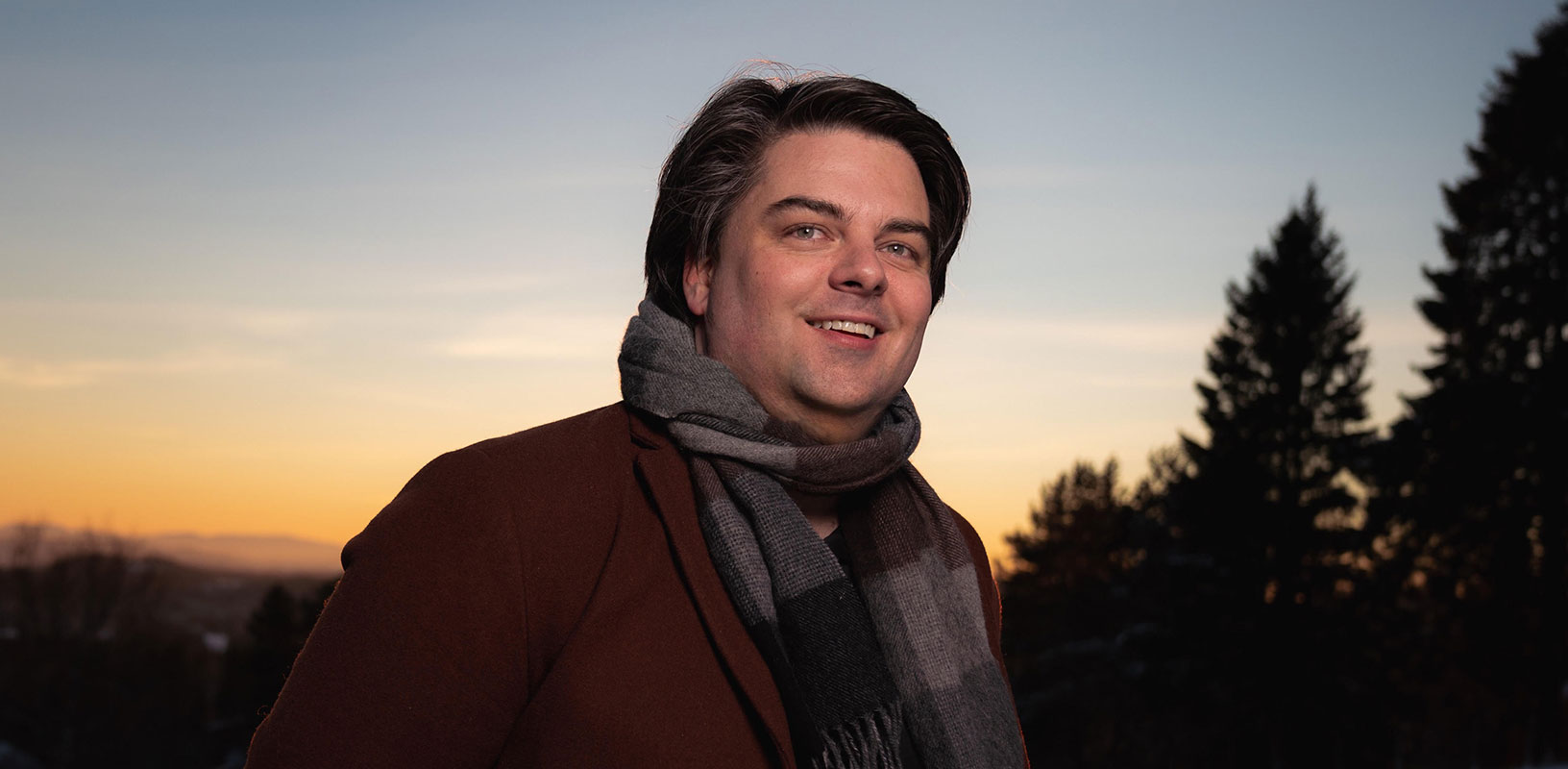Kim André Arnesen: Our Living Future premiere in London

The latest choral work by Norwegian composer Kim André Arnesen receives its premiere at the Barbican’s Milton Court in London on 13 October. Sofi Jeannin conducts the BBC Singers in combination with voices from the National Youth Choir of Great Britain in Our Living Future, exploring themes around the stewardship of our planet.
Kim André Arnesen is in the London spotlight with the world premiere of his new choral work, Our Living Future, at the Barbican’s Milton Court concert hall on 13 October. The 16-minute work, scored for SATB chorus(es), piano and strings, sets new texts by Euan Tait and was commissioned for the BBC Singers and the New Young Voice Collective, with support from the Norwegian Composers Fund. The premiere, featuring the BBC Singers, voices from the National Youth Choir of Great Britain Chamber Choir, pianist Michael Higgins and United Strings of Europe, is conducted by Sofi Jeannin and will be broadcast on BBC Radio 3.
This latest collaboration with Euan Tait follows the poet’s texts created for a number of earlier Arnesen choral works including Flight Song, My Flame the Song, Falling into Mercy, and a movement of his Stabat Mater. Sofi Jeannin worked with Arnesen on the Decca Classics recording of his Holy Spirit Mass, released in 2021, when she conducted the Trondheim Vokalensemble and Trondheim Soloists.
In their programme note Arnesen and Tait describe Our Living Future as “a musical journey inspired by two main themes: the urgent need to care for our planet, and the powerful potential of the youth in shaping tomorrow. The fundamental elements of nature: Earth, Water, Air, and Fire, serve as the foundation for the two themes. The work arose from a vision of uniting the voices of a professional adult choir with the vibrant tone of young singers.”
“In writing this work, intertwining the timeless elements with modern concerns has been deeply meaningful to us. The work stands as an ode to our shared responsibilities, touching on themes that resonate profoundly. Through its melodies and lyrics, it seeks to convey a message of hope, responsibility, and the incredible promise held by the younger generation.”
> Read the full programme note
Kim André Arnesen answers some questions about Our Living Future:
What attracts you to texts by Euan Tait?
I find Euan Tait's texts deep and relevant. He writes in a way that connects with the world today, especially about the environment and the role of the younger generation. His words are both challenging and inspiring, making them a great foundation for writing music.
Do you view the Four Elements as fully secular, or do you see connections with your sacred works?
The Four Elements refer to the essence of life, nature, and the universe, and this is where the secular and sacred meet. I believe there's a spiritual dimension to it, and that there's a search for connection and understanding just like in my sacred works. It's up to the listener to interpret how spiritual or worldly they find the music.
How does your choral writing reflect Fire, Earth, Air, Water?
In each movement, I wanted the music to give a sense of the element it represents. For Earth, I aimed for grounded and soothing melodies. Water brings rhythmic energy and flow, like waves. Air inspired a lighter, more free-flowing style, while Fire gives intensity and a feeling of change. However, my primary goal is always the emotional experience. So, while the music is influenced by these elements, it doesn't strictly describe them. I hope listeners connect to the feelings and emotions each movement brings.
* * * * *
Kim André Arnesen is currently working on alternative versions of his Stabat Mater: a new vocal score on sale will combine upper voices with a new organ accompaniment and a new version with mixed SATB voices will become available on hire. Recent Arnesen publications realeased in the Boosey & Hawkes Contemporary Choral Series include a selection of standalone choral movements arranged from larger works including Stabat Mater and The Stranger.
> Explore Arnesen publications
> Further information on Work: Our Living Future
Photo: Ole Wuttudal
